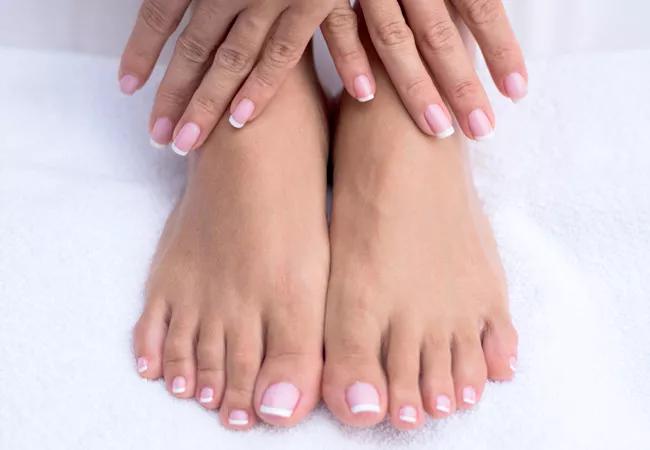A Q&A with dermatologist Thomas J. Knackstedt, MD

Q: Psoriasis of the nail is a common and recurrent problem that is often overlooked. With new therapies emerging, what do clinicians need to know?
Advertisement
Cleveland Clinic is a non-profit academic medical center. Advertising on our site helps support our mission. We do not endorse non-Cleveland Clinic products or services. Policy
A: For most patients, nail psoriasis is primarily a cosmetic issue. There is a social stigma associated with it and the disease is generally not well known.
However, as a medical disorder, treatment is typically covered by insurance.
In children or adult patients with psoriatic disease of the nail bed (which is covered by the hard nail plate), topical steroids, vitamin D3 analogues or retinoids can be effective. However, when the nail root is involved (covered by the nail plate, cuticle and proximal nail fold), which is the case with most patients with nail psoriasis, topical treatments cannot penetrate and local intralesional steroid injections are a viable alternative.
Although there are no large randomized clinical trials of this treatment, it is a well-established therapy with good historical evidence supporting its efficacy and safety dating back to the 1980s and 1990s. When performed appropriately under topical anesthesia, it is tolerable, safe and effective and can reduce pitting, onycholysis, subungual hyperkeratosis, longitudinal ridging, thickening and discoloration. Patients receive monthly injections into the affected nails for three months, after which the nails are reassessed to determine if further treatments are needed. In patients who cannot tolerate injections or who are non-responders, oral medications, such as cyclosporine, acitretin and methotrexate, can often be beneficial.
Beyond that, we now know that many patients who have skin psoriasis also have nail psoriasis, and those with both nail and skin psoriasis are more likely to have psoriatic arthritis and require a systemic approach to treatment. That’s where biologics such as infliximab, adalimumab, etanercerpt and ustekinumab may be useful. A recent article published in the Journal of the American Academy of Dermatology suggests the oral Janus kinase (JAK) inhibitor tofacitinib may also be of benefit. Tofacitinib was tested in two 52-week, double-blind, randomized trials that enrolled over 1,800 patients, a quarter of whom had psoriatic arthritis as well as nail psoriasis. The subjects received either 5 or 10 mg of tofacitinib or a placebo twice daily. Both doses of the drug significantly improved moderate-to-severe nail psoriasis by week 16 versus placebo and the improvements were sustained through one year.
Advertisement
Whatever treatment is selected, patients must be well-educated to avoid irritation or injury to the nail, which can drive the inflammation that in turn drives psoriasis. They should not pick at the nails or manipulate them in any way, and they should avoid harsh chemicals such as nonacetone and acetone nail polish removers. They must also be educated that the prognosis for nail psoriasis is quite variable. It is a slow process to resolution — it can take three to six months before improvement is seen — but most people do improve with the therapies we have available today.
Thomas Knackstedt, MD
Dermatologist, Cleveland Clinic
Advertisement
Advertisement

Family history may eclipse sun exposure in some cases

Consider secondary syphilis in the differential of annular lesions

Persistent rectal pain leads to diffuse pustules

Two cases — both tremendously different in their level of complexity — illustrate the core principles of nasal reconstruction

Stress and immunosuppression can trigger reactivation of latent virus

Low-dose, monitored prescription therapy demonstrates success

Antioxidants, barrier-enhancing agents can improve thinning hair